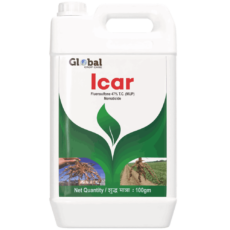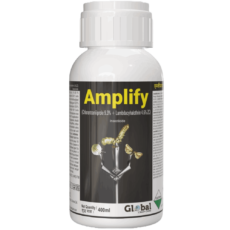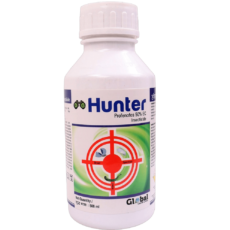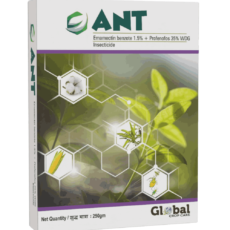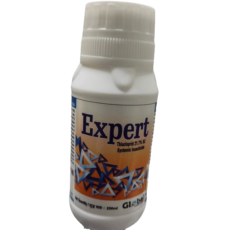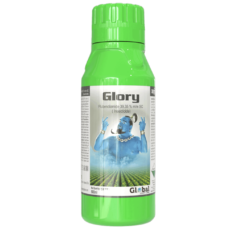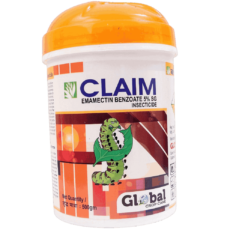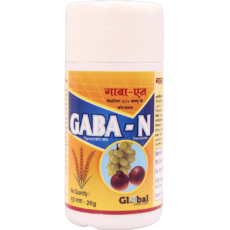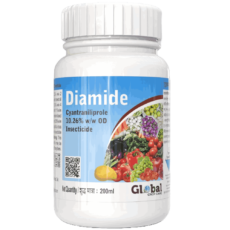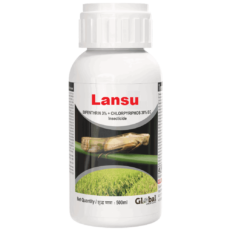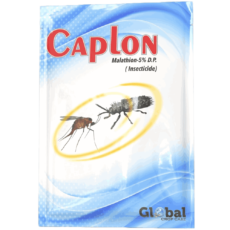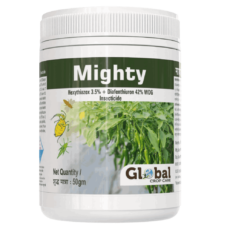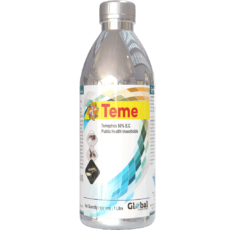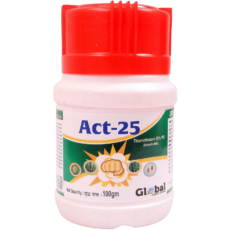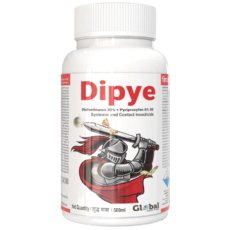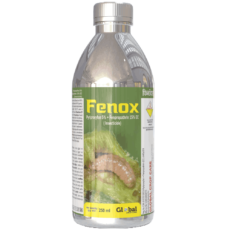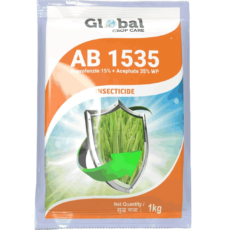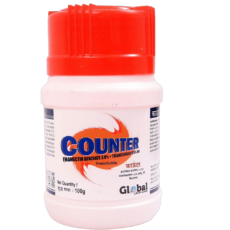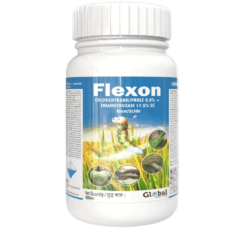Description
Hum Rahi, is a systemic insecticide that has a double mode of action, with a unique ovi-larvicidal effect against insects, offering enhanced performance and precise action in the fight against insect pests.
Benefits of Hum Rahi :
– Systemic action (penetrative and translaminar);
– Two active substances;
– Acaricide, insecticide, larvicidal and ovicidal effects;
– Wide range of applications;
– Safe for the environment and beneficial species;
– Safe to apply.
Action mode of Hum Rahi:
– It offers a wide range of effects for the protection of crops with the help of two active agents:
Chlorantraniliprole:
– Acts as a modulator for the ryanodine receptors which stimulates the release of calcium inside muscles, and leads to a destabilization of the insect’s muscular system, paralysis, and death;
– Chlorantraniliprole has proven to be highly selective when affecting ryanodine receptors in insects when compared to mammals.
Abamectin:
– Works as a GABA (Acid Gamma Aminobutyric) antagonist. This leads to an increased flux of chlorine inside insect cells, and the disruption of nervous signs.
– Insects that come into contact with the active substance are stopped from feeding, which quickly leads to their death within 2 to 4 days.
– Hum Rahi has very good effects against target insects, which are mainly Lepidoptera, but also some species of Coleoptera or Diptera at low doses.
Recommendations:
| Crop(s) | Common Name of Pest | Dosage/HA | Dilution in Water (lts) | Waiting Period between last spray to harvest (days) | |
| AI (gms) | Formulation (gms) | ||||
| Chilli | Thrips, Mites & Fruit borer | 37.5 | 625 | 500 | 5 |
Direction of Use
Measure out required quantity of the product and mix it well with a small quantity of water. Add the remaining quantity of water as specified with thorough agitation for total coverage of crop with suitable sprayer. First spray is recommended at the time of pest initiation stage (Economic Threshold Level). Repeat 1-2 sprays depending upon the pest severity. Do not spray during the hot hours of the day if the foliage is wet or if rain is imminent. Do not overdose by over lapping applications or by exceeding or lowering the recommended dose. IRAC Group code: 28 (Chlorantranilprole) and 6 (Abamectin) Mode of Action: Ryanodine Receptor Modulator (Chlorantranilprole) and GABA (Gamma Amino Butyric Acid) agonist (Abamectin) Chemical Subgroup: Anthranilic Diamides (Chlorantranilprole) and Avermectins (Abamectin) Resistance Management: Because resistance development cannot be predicted, the use of this product should confirm to sound resistance management strategies established for the crop and use area. The period insect pests are controlled with ryanodine receptor modulator should not exceed 50% of a crop period. Do not use this product in rotation with other ryanodine receptor modulator/anthrilic diamides and avermectins. Avoid treading consecutive generations of the pest with same product. It is highly recommended to have a rotation with approved insecticide of different mode of action.
Compatibility:
Can be mixed with fungicides, herbicides, insecticides, liquid fertilizers, and growth regulators, following the recommendations on the product label.
Time of Application
–
Precaution
Do not use cooking utensils for preparing the spray solution. Use stick for stirring the spray solution. Avoid contact with skin, eyes and clothing. Avoid inhalation of fog and vapors. Wear impermeable hand gloves, long sleeves, shirts, long trousers, face shield, goggles and boots to avoid contact with the skin and prevent any splashes in to the eyes. While handling and application of the product. Do not eat, drink or smoke while applying the product. Wash hands with soap with soap and plenty of water and change clothes after the work is over. Avoid contamination of air and water bodies with the insecticides. Also wash the contaminated clothes. If any indisposition occurs, stop work, follow first aid measures and call a physician. Spray strictly with the wind to prevent prolonged or repeated exposure to the spray mist. “Abamectin molecule is highly toxic to fish aquatic invertebrates, birds and bees. Thus the product containing the molecule may be avoided near aquaculture and during active foraging period of bees.” This product is toxic to bees and birds. Do not allow spray drift into flowering hedges or flowering crops in the vicinity of the treatment area. “Do not spray during active bee-foraging period of the day.” Do not spray on flowering crops and mulch flowering ground crops in orchard immediately before treatment. This product is toxic to aquatic organisms, Fish and Crustaceans. Do not contaminate soil, stagnant or running water by disposal of waste. Minimize spray drift to off crop water areas. Do not contaminate water used for irrigation or domestic purpose or water areas such as flowing or stagnant water by the disposal of product waste. Newly treated areas must not be grazed and all the livestock is to be kept out. Split product must not be re-used. Re-entry Period: do not enter treated areas for 12 hours unless protective clothing is worn. Spillage and Leakage: Remove heavily contaminated soil layer and bury in a safe place. Rinse spill area with plenty of water. Spilt product must not be re-used.
Symptoms Of Poisoning
Rash, urticarial, pruritus, ederna, headache, dizziness, somnolence, asthenia, nausea, vomiting, abdominal pain, diarrhea and mild tachycardia, etc.
First Aid
1. If ingested: If person is conscious and alert, rinse mouth with water and give 1 or 2 glass of water to drink. Never give anything by mouth to an unconscious person. If swallowed, repeatedly administer medicinal charcoal in plenty of water. Call the doctor. Do not induce vomiting until and unless desired by attending physician. 2. If inhaled: Take the patient to fresh air and take care of body temperature. If patient is not breathing or breathing with difficulty, give artificial respiration, preferably with mouth to mouth breathing. Consult a physician. 3. In case of skin contact: Wash thoroughly the affected part of body with soap and plenty of water including hairs and under fingernails. If pain, redness or irritation persists, consult a doctor. All the contaminated clothes should be segregated and thoroughly washed with soap and water separately before use. 4. In case of eye contact: Rinse gently with plenty of water at least for 15 minutes. If pain, irritation, redness or photophobia persists, consult eye specialist.
Phytotoxicity
–
Antidote
Treat symptomatically. No specific antidote is known. Consider administration of activated charcoal and a laxative.



